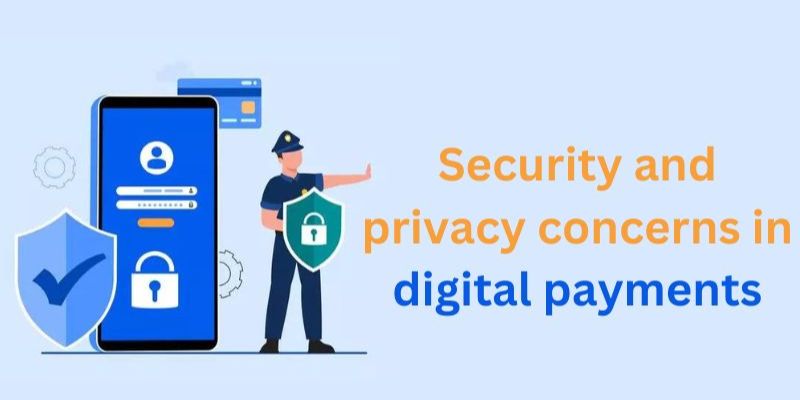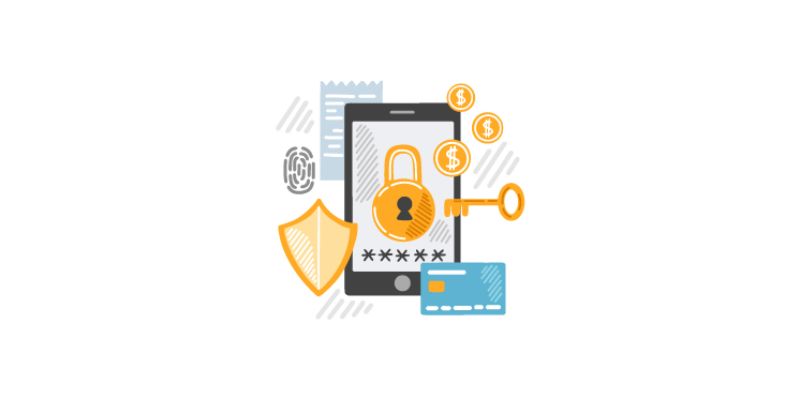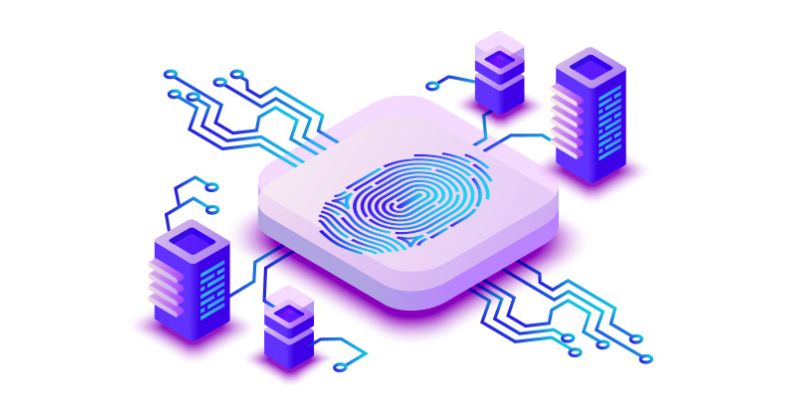As you tap your phone to grab that double-shot latte, do you pause to ponder the importance of data security for digital payments? It’s not just about keeping your coffee money safe; it’s about shielding your financial soul from prying eyes. With digital wallets becoming as common as car keys, a single breach can send your hard-earned cash into a hacker’s haven. But fear not—I’m here to guide you through the minefield of digital dangers and into the safe haven of secure transactions. Join me, as we lock down your digital life, starting with the basics and moving up to the cutting edge of payment protection.
Understanding the Rise of Digital Wallets and Their Vulnerabilities
The Evolution of Digital Wallet Usage
Not long ago, most folks bought things using cash or checks. Now, many use digital wallets. This is like a magic pocket on your phone or computer that holds your money. You can use it to buy stuff online or in stores. More people are loving this new way to pay every day.
But with all things cool, there’s a catch. These handy wallets face risks. Think of it like leaving your real wallet in a busy place. Someone could snatch it! Digital wallets can also get attacked. Bad guys use tricks to steal from them. That’s where data security for e-payments comes into play.
Recognizing Common Security Threats to Your E-money
Are digital wallets safe? They can be, but you’ve got to watch for dangers. Hackers love to look for weak spots. They might try to trick you into giving them your secret codes. They also use creepy software to sneak in and grab your money. So we must keep our wallets locked tight!
Online payment encryption helps a lot. It scrambles your payment details. Think of it like talking in a secret code that only the right person can understand. Cybersecurity for electronic payments works hard to stop thieves. But they’re clever and always finding new ways to cause trouble.
Thieves don’t play fair. They even make fake websites that look real. They want you to enter your card details so they can take them. This is why we need secure payment processing. It checks to make sure everything and everyone is legit. Only then will it let the payment go through.
Another sneaky attack is when someone tries to grab your card number when you use it. That’s credit card skimming. It’s like someone peeking over your shoulder. But we have ways to fight back. Two-factor authentication asks for extra proof it’s really you. Like a code sent to your phone.
To safeguard your financial data, many smart tools are used. Tokenization is one. It turns your card number into random symbols for each buy. It means if someone does get these symbols, they can’t use them to steal from you. It’s like changing the locks each time you use your door.
Some places use special chips on cards to make them safe. These’re called EMV chip technology. They make every buy have its own unique code. It’s pretty awesome and a big step in fraud prevention for digital payments.
We can’t forget about the new rules for keeping data safe. GDPR and digital payments need to play nice together. GDPR is a law that tells how to handle people’s private info in Europe. Every place that takes digital payments must follow these rules. It’s like having a rulebook for playing fair and being safe.
Keeping your e-money secure is super important. Bad guys are getting smarter. That means we’ve got to stay one step ahead. With things like better encryption, smarter tech, and good choices, we can keep our digital wallet safe as a locker. And when folks trust their wallets, they use them more. That’s good for everyone!

Devising a Robust Digital Payment Security Framework
Encryption Techniques and Protocols for Solid Defense
When we shop online or use our phones to pay, we share private info. This info can be stuff like credit card numbers or passwords. Bad people try to steal this info. That’s why we need good ways to hide this info. Imagine wrapping your info in a secret code. That’s what encryption does. It scrambles your info so only the right person can read it.
Every time you buy something online, the secret code changes. This is good because it’s harder for thieves to figure out your info. Banks and shops use these codes too. They want to keep your info safe. Remember to look for a little lock icon in your web browser when you pay. It shows that your info is being sent safely.
Keeping your payment info safe is not easy. But with strong secret codes, we can protect it from thieves. It’s like giving your info a super safe lock that only you and the shop can unlock.
Compliance and Regulation: The Role of PCI DSS
Now let’s talk about rules that keep your payment safe. There’s a big rulebook called PCI DSS made by credit card companies. It’s like a set of good habits that shops and banks must follow to protect your info. They must build strong walls around your info and check them often.
If shops don’t follow these rules, they can get into trouble. Banks might not let them take credit cards anymore. They also risk a thief breaking in and stealing your info. So these rules are super important.
Think of it like building a fort. The PCI DSS rules are how to build a strong fort to keep the bad guys out. We all want our money to be safe, and these rules help a lot.
By using codes to hide your info and following these rules, we can keep your digital wallet safe. It’s a bit like being a secret agent, but for protecting your money. And just like a secret agent, we’re always learning new tricks to stay ahead of the bad guys.
Keeping your digital wallet safe means always being ready and using all the tools we have. We use secret codes, follow the rules, and build strong forts to keep our money safe. And that’s pretty cool.

Advanced Technologies and Practices to Shield Your Transactions
Embracing Biometrics and Multi-Factor Authentication
Think about your phone. You open it with a touch or a look. Easy, right? Now, picture that same simple act protecting your money. That’s biometrics. It’s your unique key that only you have. It might be your fingerprint, your face, or even the way you talk. Why’s that better? No one else is you. With biometrics, stealing your info isn’t so easy.
You might ask, how does it really keep your cash safe? Here’s how: with biometrics, no match means no access. It stops fraudsters before they start. And that’s not all. You’ve got multi-factor steps, too. You know, like when a code pops up on your phone and you have to type it in? That’s another wall for bad guys to climb. They might pretend to be you, but without your phone, they can’t get in.
With both these guards up, your digital wallet breathes easier. And you? You worry less.
The Future of Payment Security: Tokenization and EMV Chips
Cards in your wallet are getting smarter. How? With chips and tokens. Think of tokenization like a disguise for your card number. Every time you buy something, it changes. So, even if someone grabs that number, it’s no good next time. It’s like a one-time password for your card info.
And then there’s the chip on your card, the EMV chip. It turns your info into a code. A code that’s tough to crack. Every time you dip or tap your card, that code’s at work. Someone copying your swipe? They get nothing useful. With chips and tokens, your digital transactions gain armor.
As your digital payment expert, I’m always watching for threats. I nudge payment businesses to step up their game. Keep their encryption top-notch. Make sure they follow rules like PCI DSS, a big deal for security. It means they’re checking lots of boxes to keep your details safe.
Why care about PCI DSS? It’s a set of rules for any place handling card info. It helps protect against data breaches, where info leaks out and leads to fraud. Just like a seatbelt in a car, it’s there to keep you safe on your buying journey.
So what’s next? As tech gets better, expect payment security to grow stronger. It’s like a race where we’re staying ahead of the bad guys. With each step – from biometrics, to multi-factor checks, to smarter cards – we build trust. Your trust. In a world where you flash your phone to pay, that’s gold.
Remember, when it comes to your money, simple steps matter. Check that sites use SSL certificates. These keep your info scrambled and out of reach. Be on the lookout for skimmers when you swipe. These nasty bits of tech can steal card details.
Most importantly, keep your devices secure. Locks, updates, scans. It’s like a digital health check-up. And it’s essential. Because your peace of mind? That’s priceless. And with every measure, like a vigilant warrior, I’m here to keep your digital transactions armored up and your financial future secure.

Building Consumer Trust Through Secure Payment Experiences
Preventing Identity Theft: Educating Users on Secure Practices
You check your bank app and notice a charge you don’t recall. Your heart sinks as you realize someone may have stolen your identity. This threat is why educating about data security in e-payments is vital. Every time you buy online, your data can be at risk. That’s why knowing how to lock down your digital wallet is key.
Start with the basics, like strong passwords. Mix letters, numbers, and symbols. It’s a simple step to guard your financial data. Always keep a sharp eye on bank statements, too. Spot any weird charges? Report them fast. This helps stop fraudsters in their tracks.
Enable two-factor authentication for payments, if you can. It’s like a double-lock for your account. Only you should have the key. Also, be mindful of Wi-Fi. Public networks are often not safe. Cyber thieves can lurk there. Use your mobile data instead for online payment encryption safety.
Assessing Payment Gateways: Ensuring Continuous Security Audits
Think of payment gateways as bridges. These bridges connect your payment to the seller. Like any bridge, they need checks to stay safe. Regular security audits make sure these bridges don’t have cracks that criminals can slip through.
Online shops need to use secure payment processing systems. Look for SSL certificates when you visit a site. A lock icon or ‘https’ in the web address also shows it’s secure. PCI DSS compliance is a seal of trust for sites. It means they follow tough rules to protect your card data.
But even strong bridges can face threats. That’s why continuous risk management in digital payments is crucial. Payment gateways must fix vulnerabilities. They can’t get lax. Plus, they must keep up with cybersecurity for electronic payments. This includes, but isn’t just about, tough tech defense. They must also teach you, the user, how to keep your end of the bridge steady.
I’ll share a secret with you. Even experts like me must stay sharp on digital wallet safety. We must all play our part. Always pick shops that show they value your e-payment security as much as you do. They should be clear about their safety measures. They don’t just ask for your trust; they earn it every day.
Trust isn’t just given; it’s built over time. Every bit of effort toward safeguarding financial data counts. It’s all about sticking to smart choices, keeping informed, and taking control of your e-transaction security. Your vigilance is your power. Stay updated on the best practices for protecting yourself. Make it hard for those fraudsters. Let’s keep our digital wallets locked tight!
Remember, your financial safety online is a partnership. It’s about the security measures payment services take and about educating yourself. A secure payment experience is a shared goal for us all. We can keep our digital bridge strong with teamwork and smart security habits.
In this post, we explored the growing world of digital wallets and how to keep your e-money safe. We learned about their history and the risks they face. We looked at strong security practices like using tough encryption and following rules like PCI DSS. We also talked about new tech like biometrics and special chips that make paying safer.
To wrap up, keeping digital payments secure needs us to be smart and up-to-date. A safe payment experience builds trust. By teaching users and checking our systems, we all help fight theft and fraud. Stay safe out there!
Q&A :
Why is data security crucial for digital payments?
Data security is fundamental for digital payments because it protects both consumers and businesses from fraud, identity theft, and unauthorized transactions. It ensures that sensitive information like bank details, credit card numbers, and personal identification information are encrypted and kept away from cybercriminals. As digital payments often involve real-time transactions, robust data security measures help maintain the integrity and trust in the digital payment ecosystem.
What are the potential risks of not prioritizing data security in digital payments?
Not prioritizing data security in digital payments can lead to several risks, including financial loss for consumers and businesses, damage to a company’s reputation, legal repercussions for failure to comply with data protection regulations, and a decrease in consumer confidence in digital payment systems. The exposure of sensitive financial data can be devastating, leading to fraud and identity theft incidents, which can have long-lasting effects on all parties involved.
How can businesses enhance their data security measures for digital payments?
Businesses can enhance data security measures for digital payments by implementing strong encryption protocols, maintaining up-to-date security software to protect against malware and hacking attempts, and ensuring compliance with industry standards and regulations such as PCI DSS. Additionally, businesses should regularly audit their systems, provide cybersecurity training for employees, and adopt secure authentication methods to verify user identity before processing transactions.
What role do consumers play in maintaining data security with digital payments?
Consumers play a significant role in maintaining data security with digital payments. They can contribute by using strong, unique passwords for their accounts, avoiding sharing sensitive information over unsecured networks, regularly monitoring their bank statements for unauthorized transactions, and staying informed about the latest security practices. Consumers should also utilize the security features offered by service providers, such as two-factor authentication, and promptly report any suspicious activity to their financial institutions.
Can digital payment platforms fully guarantee the safety of my data?
While digital payment platforms strive to implement extensive security measures, no system can claim to be 100% infallible. Platforms regularly update security protocols, employ advanced encryption technologies, and adhere to regulatory standards to minimize risk, but users should be aware that no service can completely guarantee the safety of data. It is important for users to stay vigilant, use security features wisely, and partner with reputable payment platforms that are transparent about their data security practices.

